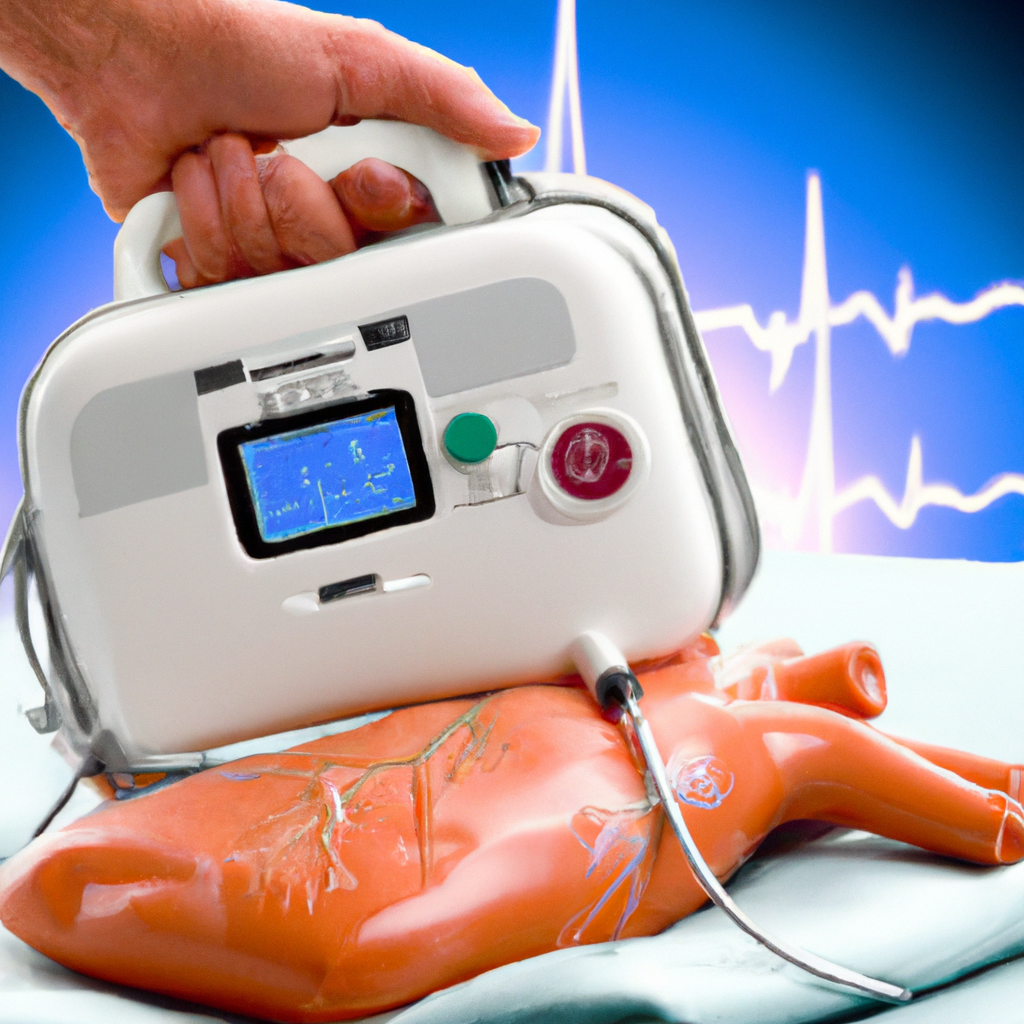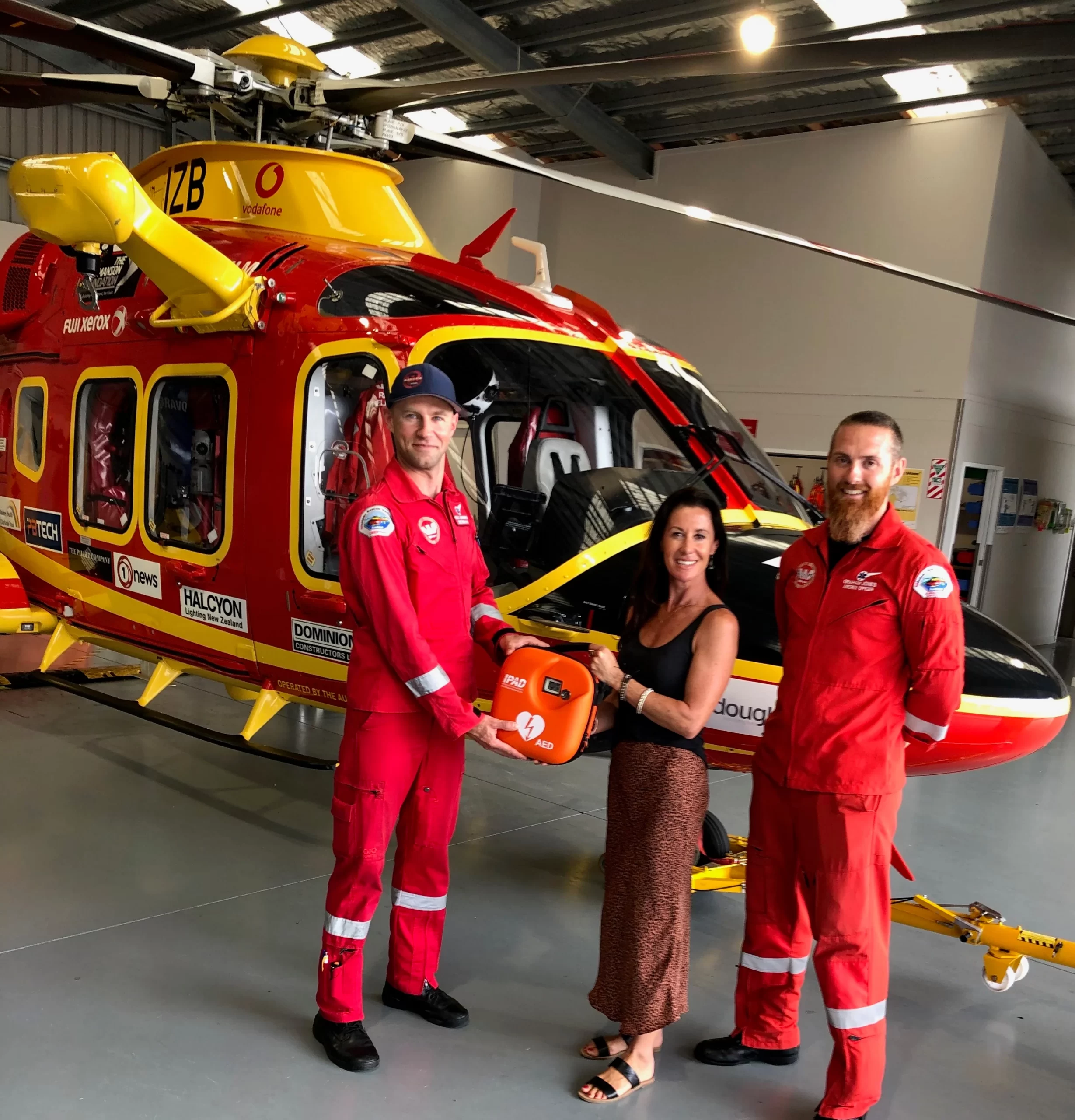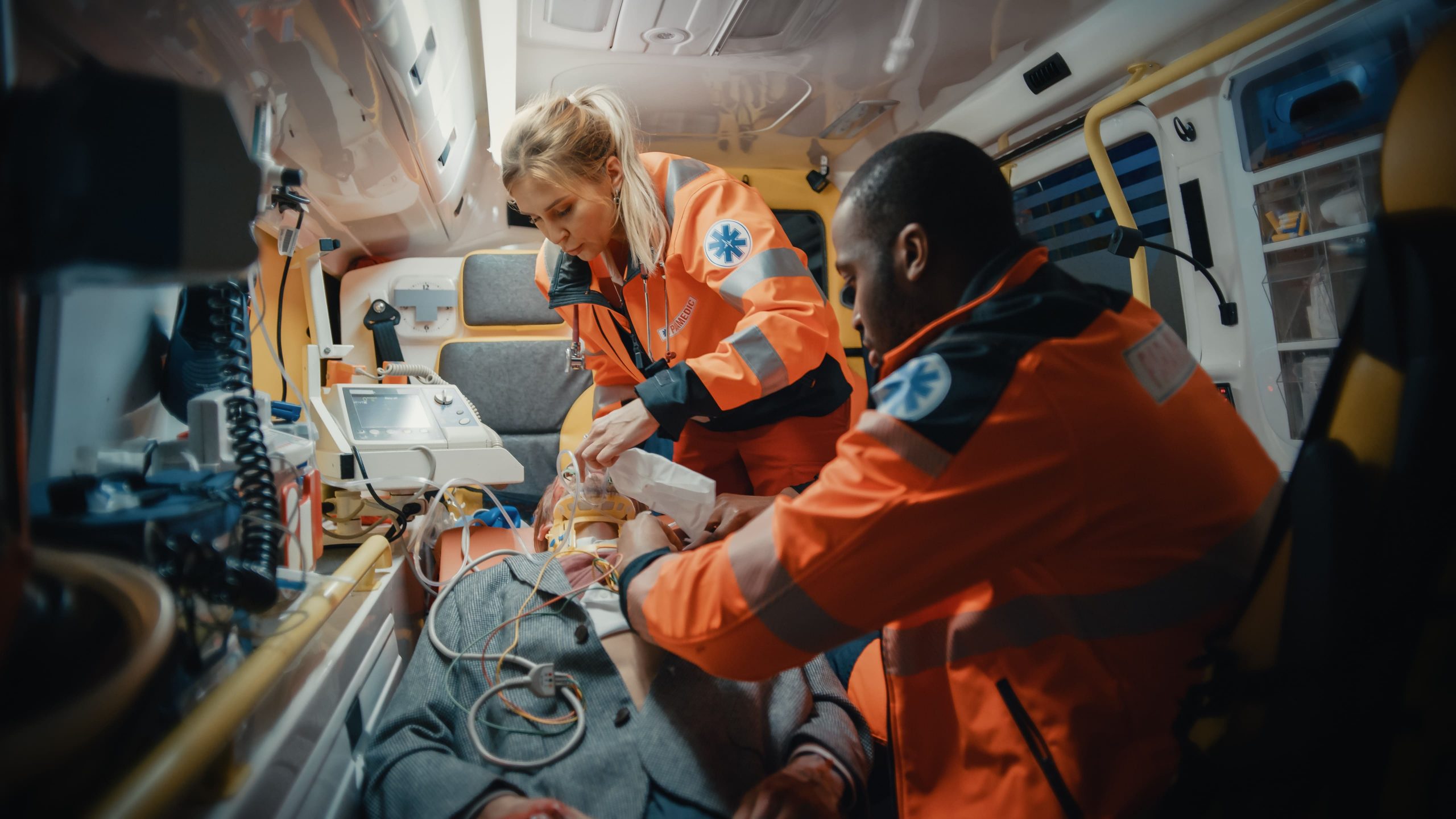Alright, so picture this scenario: you’re up in the air, thousands of feet above the ground, and suddenly someone on the flight experiences a cardiac emergency. It’s a terrifying situation, but fear not, because defibrillators and cardiac care are here to save the day! In this article, we’ll take a closer look at the importance of these life-saving devices and how they’re utilized in air ambulances. So buckle up and get ready to dive into the world of defibrillators and cardiac care in the air!
I. Introduction to Cardiac Care in the Air
When it comes to medical emergencies, time is of the essence. This is especially true for cardiac emergencies, where every second counts. In situations where immediate medical attention is required, an air ambulance can be a lifesaver. These specialized aircraft are equipped with state-of-the-art medical equipment and a highly trained medical team to provide critical care while transporting patients to medical facilities. One crucial aspect of cardiac care in air ambulances is the presence of defibrillators. These devices play a vital role in saving lives during cardiac emergencies. In this article, we will take a closer look at defibrillators and their importance in cardiac care in the air.
II. Understanding Defibrillators
A. What Is a Defibrillator?
A defibrillator is a medical device used to deliver an electric shock to the heart in order to restore its normal rhythm. It is primarily used in cases of cardiac arrest, where the heart suddenly and unexpectedly stops beating. This can happen due to various reasons such as a heart attack, arrhythmia, or other underlying cardiac conditions. Defibrillators are designed to detect abnormal heart rhythms and deliver an electric shock to restore the heart’s natural rhythm, allowing it to pump blood effectively.
B. How Do Defibrillators Work?
Defibrillators work by delivering a controlled electric shock to the heart. These devices are equipped with specialized sensors that can detect the electrical activity of the heart. When a defibrillator detects a life-threatening arrhythmia, it analyzes the heart’s rhythm and determines whether a shock is required. If a shock is necessary, the defibrillator delivers a carefully calibrated electric shock through electrodes placed on the patient’s chest. This shock momentarily interrupts the abnormal electrical activity in the heart, giving it a chance to reset and regain its normal rhythm.
C. Types of Defibrillators
There are different types of defibrillators available, each with its own set of features and applications. The two main categories of defibrillators are automated external defibrillators (AEDs) and manual defibrillators. AEDs are designed to be user-friendly and can be used by non-medical personnel in emergencies. They provide clear voice prompts and visual instructions to guide users through the resuscitation process. On the other hand, manual defibrillators are primarily used by healthcare professionals who have received specialized training in cardiac care. These devices provide more advanced features and allow for greater control during treatment.
D. Importance of Defibrillators in Cardiac Care
Defibrillators play a crucial role in cardiac care, both on the ground and in the air. In cases of sudden cardiac arrest, prompt defibrillation can significantly increase the chances of survival. When a cardiac emergency occurs in the air, the presence of a defibrillator on board an air ambulance can be the difference between life and death. The immediate availability of this life-saving device allows the medical team to provide timely intervention and increase the likelihood of a positive outcome. Defibrillators are a vital tool in the hands of trained medical professionals, enabling them to respond effectively to cardiac emergencies.
III. Cardiac Emergencies
A. Common Cardiac Emergencies
Cardiac emergencies encompass a range of conditions that require immediate medical attention. Some of the most common cardiac emergencies include heart attacks, cardiac arrest, arrhythmias, and congestive heart failure. A heart attack occurs when the blood supply to the heart is blocked, leading to damage or death of the heart tissue. Cardiac arrest, on the other hand, is a sudden loss of heart function, resulting in the cessation of blood flow to the body. Arrhythmias refer to abnormal heart rhythms, which can be life-threatening if left untreated. Congestive heart failure occurs when the heart is unable to pump enough blood to meet the body’s needs.
B. Recognizing Symptoms of Cardiac Issues
Recognizing the symptoms of a cardiac issue is crucial for early intervention and timely medical care. Common symptoms of a heart attack include chest pain or discomfort, shortness of breath, nausea, lightheadedness, and pain or discomfort in the arms, neck, jaw, or back. In the case of cardiac arrest, the individual may suddenly collapse, lose consciousness, and stop breathing or have abnormal breathing. Arrhythmias can manifest as palpitations, rapid or irregular heartbeat, dizziness, fainting, or chest discomfort. Congestive heart failure may present with symptoms such as fatigue, shortness of breath, swelling of the legs or ankles, and persistent cough.
C. Immediate Response to Cardiac Emergencies
In the event of a cardiac emergency, it is crucial to take immediate action. The first step is to call for emergency medical assistance. While waiting for medical professionals to arrive, it is important to start cardiopulmonary resuscitation (CPR) if the patient is unresponsive and not breathing or not breathing normally. CPR involves chest compressions to keep the blood circulating and delivering oxygen to vital organs. If a defibrillator is available, it should be used as soon as possible to deliver a shock if necessary. Early defibrillation, combined with CPR, greatly improves the chances of survival.
D. Role of Defibrillators in Cardiac Emergencies
Defibrillators play a critical role in cardiac emergencies by providing immediate intervention to restore the heart’s natural rhythm. In the case of cardiac arrest, prompt defibrillation is essential to increase the chances of a successful resuscitation. When used in conjunction with CPR, defibrillators significantly improve the outcomes for patients experiencing cardiac emergencies. The presence of defibrillators in air ambulances ensures that cardiac patients receive timely defibrillation even during transportation to the hospital, increasing their chances of survival.
IV. Cardiac Care in Air Ambulances
A. The Need for Cardiac Care in Air
The need for cardiac care in air ambulances arises from the fact that cardiac emergencies can occur at any time and in any location. In many cases, the immediate availability of specialized medical care is crucial to save lives. Air ambulances are uniquely positioned to provide rapid transportation for patients requiring urgent cardiac intervention. These specially equipped aircraft are capable of reaching remote locations quickly and efficiently, ensuring that patients with cardiac issues receive the care they need without delay.
B. Equipping Air Ambulances with Defibrillators
To provide effective cardiac care in air ambulances, it is essential to equip these aircraft with defibrillators. These life-saving devices must be readily available and easily accessible to the medical team on board. Air ambulance defibrillators are specially designed for use in-flight and are equipped with features such as rugged construction, lightweight design, and built-in safety mechanisms to withstand the unique challenges of air transportation. Regular maintenance and testing of defibrillators are crucial to ensure their reliability and functionality when needed.
C. Challenges and Considerations for Cardiac Care in Air
Cardiac care in air ambulances poses several challenges and considerations due to the unique environment of flying at high altitudes. Altitude and cabin pressure can have an impact on the functioning of defibrillators and the overall care provided. The medical team must be aware of the potential physiological changes that occur during flight and adapt their treatment accordingly. In addition, the limited resources and space available in air ambulances require careful planning and coordination to ensure the highest level of care for cardiac patients.

V. Training and Certification
A. Importance of Proper Training
Proper training is essential for the medical team involved in cardiac care in air ambulances. The ability to effectively use defibrillators and provide appropriate care during cardiac emergencies requires specialized knowledge and skills. Training ensures that medical professionals are equipped with the necessary expertise to handle critical situations and make informed decisions. It also helps them develop the confidence and competence required to provide optimal care to patients in challenging conditions.
B. Training Programs for Air Ambulance Crew
Various training programs are available for air ambulance crew members to enhance their skills in cardiac care. These programs cover topics such as advanced cardiac life support (ACLS), basic life support (BLS), defibrillator operation, and emergency medical techniques specific to the aviation environment. Training programs often involve a combination of theoretical knowledge and hands-on practical training to simulate real-life scenarios. Regular training and refresher courses are essential to ensure that the medical team remains up-to-date with the latest advancements in cardiac care.
C. Certification Requirements for Cardiac Care
Certification requirements for cardiac care in air ambulances may vary depending on the region and regulatory guidelines. Medical professionals involved in providing cardiac care on air ambulances often need to possess certifications such as Advanced Cardiac Life Support (ACLS), Basic Life Support (BLS), and certifications specific to aviation medicine. These certifications demonstrate that the medical team has undergone rigorous training and met the standards set by regulatory bodies. Compliance with certification requirements ensures that the highest level of care is provided to cardiac patients during air transportation.
VI. Cardiac Care Team in Air Ambulances
A. Roles and Responsibilities
The cardiac care team in air ambulances consists of highly trained medical professionals with specialized knowledge in cardiac care. The team typically includes physicians, nurses, paramedics, and other healthcare professionals who work together to ensure the well-being of the patient. The roles and responsibilities of the team members may vary, but their primary objective is to provide critical care during transportation. This includes monitoring the patient’s vital signs, administering medications, performing necessary medical procedures, and ensuring the proper functioning of defibrillators and other medical equipment.
B. Collaboration with Ground Medical Team
Effective collaboration between the air ambulance cardiac care team and the ground medical team is crucial for seamless patient care. Prior to the flight, the air ambulance team coordinates with the ground medical team to obtain relevant patient information, including medical history and ongoing treatment. This collaboration ensures a smooth handover of the patient upon arrival at the receiving hospital. Regular communication and coordination between the two teams help facilitate the continuity of care and improve outcomes for cardiac patients.
C. Coordination with Receiving Hospital
Close coordination with the receiving hospital is essential to ensure a seamless transition of care for cardiac patients transported by air ambulance. The air ambulance team communicates with the receiving hospital to provide updates on the patient’s condition, transfer vital medical records, and relay any specific requirements or instructions. This coordination helps the receiving hospital prepare for the patient’s arrival, ensuring that the necessary resources and personnel are available for immediate treatment and further care.

VII. Communication and Coordination
A. Effective Communication Protocols
Effective communication protocols are vital for efficient and safe cardiac care in air ambulances. Clear and concise communication between the air ambulance team, dispatch, and ground units allows for timely response and coordinated efforts. Standardized communication procedures, including the use of radio communication systems, help ensure that critical information is relayed accurately and promptly. Well-established communication protocols minimize the risk of errors and enhance the overall efficiency of the cardiac care process.
B. Coordination with Dispatch and Ground Units
Coordination with dispatch and ground units is crucial for successful cardiac care in air ambulances. Dispatchers play a central role in arranging the timely dispatch of air ambulances and coordinating the logistics of patient transportation. They relay important information to the air ambulance team, including the nature of the cardiac emergency, patient details, and the location of the incident. Effective coordination with ground units, such as emergency medical services and ground ambulances, ensures a seamless transition of care before and after air transfer.
C. Handover at Receiving Hospital
The handover process at the receiving hospital is a critical step in the cardiac care journey of patients transported by air ambulance. The air ambulance team works closely with the receiving hospital staff to provide a comprehensive handover that includes vital medical information, patient history, treatment provided during transportation, and any ongoing interventions. This thorough handover ensures that the receiving hospital can continue the care seamlessly, avoiding any gaps or delays in the patient’s treatment.
VIII. Challenges and Considerations
A. Safety Considerations in-flight
Safety considerations are paramount in air ambulances, especially during cardiac care in-flight. The medical team must adhere to strict safety protocols and guidelines to ensure the well-being of both the patient and the crew. This includes securing medical equipment properly, providing a stable and controlled environment, and minimizing any potential risks associated with the aircraft’s movement. Safety checks and procedures before, during, and after each flight are essential to minimize the likelihood of accidents or mishaps.
B. Limited Resources in Air Ambulances
Air ambulances operate in a unique environment with limited resources compared to traditional hospital settings. The limited physical space onboard the aircraft requires careful planning and organization to ensure the availability of essential medical equipment and supplies. The medical team must be proficient in resource management to make the most of the limited resources available. Regular inventory checks, restocking, and effective communication with the receiving hospital help maintain the necessary resources for cardiac care in air ambulances.
C. Impact of Altitude and Cabin Pressure
Altitude and cabin pressure can have an impact on cardiac patients and the functioning of medical equipment in air ambulances. The reduced oxygen levels at high altitudes can pose challenges for patients with compromised cardiac function. It is crucial for the medical team to be aware of these physiological changes and adjust their treatment accordingly. Additionally, the impact of altitude and cabin pressure on the functioning of defibrillators and other medical devices should be considered to ensure their optimal performance during flight.
D. Legal and Ethical Considerations
Legal and ethical considerations play a significant role in cardiac care in air ambulances. Medical professionals providing care onboard air ambulances must adhere to the legal and ethical guidelines set by regulatory bodies. This includes maintaining patient confidentiality, obtaining informed consent when possible, and following established protocols for medical interventions. The medical team must also be aware of the legal implications associated with providing care across different jurisdictions or during international air transports.

IX. Case Studies
A. Successful Cardiac Care in Air Ambulances
Numerous case studies illustrate the successful outcomes of cardiac care provided by air ambulances equipped with defibrillators. These real-life examples showcase instances where prompt intervention, including defibrillation, has saved lives during cardiac emergencies. From rural areas with limited access to advanced medical facilities to remote locations affected by natural disasters, air ambulances have played a crucial role in providing timely cardiac care and improving patient outcomes.
B. Lessons Learned from Challenging Cases
Challenging cases also provide valuable lessons that help improve the delivery of cardiac care in air ambulances. These cases highlight areas where further training, equipment enhancements, or procedural changes are necessary to ensure the best possible care for patients. By analyzing challenging cases and identifying areas for improvement, air ambulance providers can enhance their protocols, refine training programs, and implement changes that address the unique challenges encountered during cardiac emergencies in flight.
X. Future Developments in Cardiac Care
A. Advancements in Defibrillator Technology
Advancements in defibrillator technology continue to drive innovation in cardiac care. Newer generation defibrillators are designed to be more compact, lightweight, and user-friendly without compromising on performance. Enhanced features such as advanced rhythm analysis algorithms, customizable energy delivery, and real-time feedback to guide the rescuer make defibrillators more efficient and effective. Ongoing research and development in defibrillator technology aim to further improve outcomes for patients requiring cardiac care in air ambulances.
B. Incorporating Remote Cardiac Monitoring
Remote cardiac monitoring has the potential to revolutionize cardiac care in air ambulances. Advances in telemedicine and wireless connectivity allow for real-time transmission of vital signs and cardiac data from the aircraft to a medical control center on the ground. This remote monitoring enables healthcare professionals to closely monitor the patient’s cardiac status, provide guidance to the air ambulance team, and make informed decisions regarding treatment during transit. The integration of remote cardiac monitoring systems with defibrillators and other medical devices in air ambulances holds great promise for enhancing patient care.
C. Research and Innovation
Ongoing research and innovation are essential to drive continuous improvement in cardiac care in air ambulances. Scientists, medical professionals, and industry experts are collaborating to develop new techniques, protocols, and technologies that further enhance the quality and effectiveness of care provided during transportation. Research studies are focused on topics such as optimal defibrillation strategies, evaluation of new medical devices, and the impact of altitude on cardiac patients. By pushing the boundaries of knowledge and embracing innovation, the field of cardiac care in air ambulances can continue to evolve and save more lives.
In conclusion, defibrillators are critical components of cardiac care in air ambulances. These life-saving devices play a vital role in restoring the heart’s natural rhythm during cardiac emergencies. The presence of defibrillators, along with a highly trained medical team, enables air ambulances to provide immediate and effective cardiac care during transportation. Proper training, certification, and coordination with ground medical teams and receiving hospitals are essential for delivering high-quality care. Despite the challenges and considerations associated with providing cardiac care in flight, advancements in technology and ongoing research continue to drive improvements in this vital aspect of air ambulance services. With a focus on safety, communication, and the well-being of the patient, the future looks promising for cardiac care in air ambulances.



